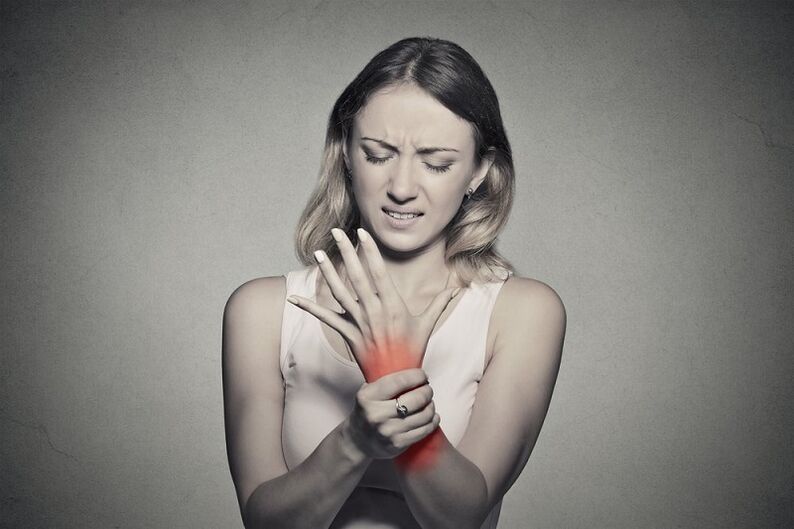Arthrosis occurs quite often and ranks 3rd in the ranking of the most common diseases, following cancer and cardiovascular pathologies.This disease affects people of both sexes.About 20% of the entire adult population suffers from this pathology.The likelihood of developing arthrosis increases with age.
Arthrosis is considered a chronic joint pathology, in which a gradual destructive process occurs in the cartilage and joint capsule.If the treatment of arthrosis is neglected, deformation and destruction of the bone itself is possible.
When the metabolic process in the joint is disturbed, the cartilage loses its elasticity and eventually arthrosis develops.There are various reasons that contribute to the destruction of cartilage: excessive load, injuries, hereditary factors, hormonal changes, old age, metabolic disorders, insufficient blood circulation in the joints, and some diseases.
There are two types of joint arthrosis: primary or secondary.With primary arthrosis, without identifying any other abnormalities in the body, the recovery process in the cartilage tissue is disrupted.Secondary arthrosis always occurs in damaged joints or as a result of other pathologies in the body.
The progressive destruction of cartilage tissue leads to pain and limited movement of the diseased joint.In the absence of adequate treatment, over time, joint arthrosis can lead to a lack of joint function.
Causes of arthrosis
When metabolic processes in the joints are disrupted or lubricants are produced in insufficient quantities, poor lubrication occurs in the affected joints.With sliding and increased sliding and excessive loads, irreversible destructive processes occur in the joints.
Joint arthrosis is promoted by hereditary disorders, mechanical damage in the form of bone fractures or various joint injuries, etc.Obesity can also cause the development of arthrosis due to the load on the joints, and, thus, their injury.
Joints are also negatively affected by incorrect posture or surgical intervention, which can damage the joint structure.
Insufficient amounts of calcium and micro, vitamin deficiency, metabolic disorders contribute to irreversible changes in bone tissue, cartilage, and lubricant.All these changes gradually lead to the disruption of the regenerative process in the joint and its further destruction.
Autoimmune diseases, estrogen deficiency and hormonal disorders that occur in the female body during menopause contribute to changes in joint tissues and their destruction.
Causes of arthrosis are also:
- disruption of blood supply to tissues;
- decreased collagen synthesis (with insufficient liver function);
- various inflammatory processes;
- lack of nutrition in tissues;
- hypothermia;
- Deterioration of metabolic processes in the body.
Symptoms of joint arthrosis

Depending on the location of the wound, the degree of the disease, changes and the level of the process, the symptoms of the disease may be different:
- joint pain;
- morning (or after rest) stiffness;
- decreased performance;
- lameness;
- Crushing noise when walking;
- limited movement;
- joint immobility;
- deformation of diseased joints;
- inflammation of the affected joint;
- increased sensitivity to atmospheric changes;
- periarticular muscle atrophy.
Treatment of arthrosis
Treatment of arthrosis consists of several stages:
- pain reduction,
- reduction of inflammation,
- Strengthens the regenerative process in cartilage tissue.
Any load on the affected joint, walking or standing, or heavy lifting is contraindicated.
Treatment of arthrosis is a set of measures that help increase collagen production, restore metabolic processes, eliminate inflammation, activate blood circulation and nutrition in tissues.
During the treatment of arthrosis, medicines, physiotherapy procedures and a balanced diet are used.To restore damaged cartilage and improve the composition of intra-articular lubrication, the use of chondroprotectors is recommended.
Treatment is prescribed individually, depending on the diagnosis, after conducting several studies to assess the condition of the tissues and periarticular structures, as well as determine the degree of destruction of the cartilage tissue.
To improve blood circulation in joint tissues and their condition, acupressure and acupuncture are recommended.
You can also do moxibustion (cauterization) with pain relief.This procedure involves heating biologically active points on the body using moxas (wormwood or charcoal cigars).Moxotherapy ensures good blood flow and tissue heating, improving metabolic processes.
A balanced diet and balanced physical therapy are very important to improve the condition.
Complications of arthrosis

Without treatment for arthrosis, the disease develops and over time leads to an irreversible process, to inflammation and deformation of bones or cartilage tissue.Deformation of diseased joints contributes to decreased motor function and even complete immobilization (ankylosis).
Complications of joint arthrosis:
- stiffness of movement;
- joint deformation or destruction.
As a result of the complications of arthrosis, the risk of disability and deterioration of the patient's quality of life increases.
Dietary nutrition for arthrosis
Since excess body weight contributes to the development of joint arthrosis, it is necessary to reduce it.Therefore, it is advisable to exclude flour products and sweets from the diet;You can also not drink alcohol and fatty fish.
To restore strength to bones and cartilage, mobility to joints and elasticity to tissues, it is recommended to take jellied meat - a warehouse of micro and collagen.
To increase metabolism, it is advisable to include in the menu foods rich in B vitamins and folic acid.For arthrosis, mushrooms, eggs, dairy products, and liver are very useful.
The principles of nutrition for arthrosis should be:
- Fractional food;
- exclusion of heavy food (especially at night);
- daily walk in the fresh air;
- continuous weight control.


















